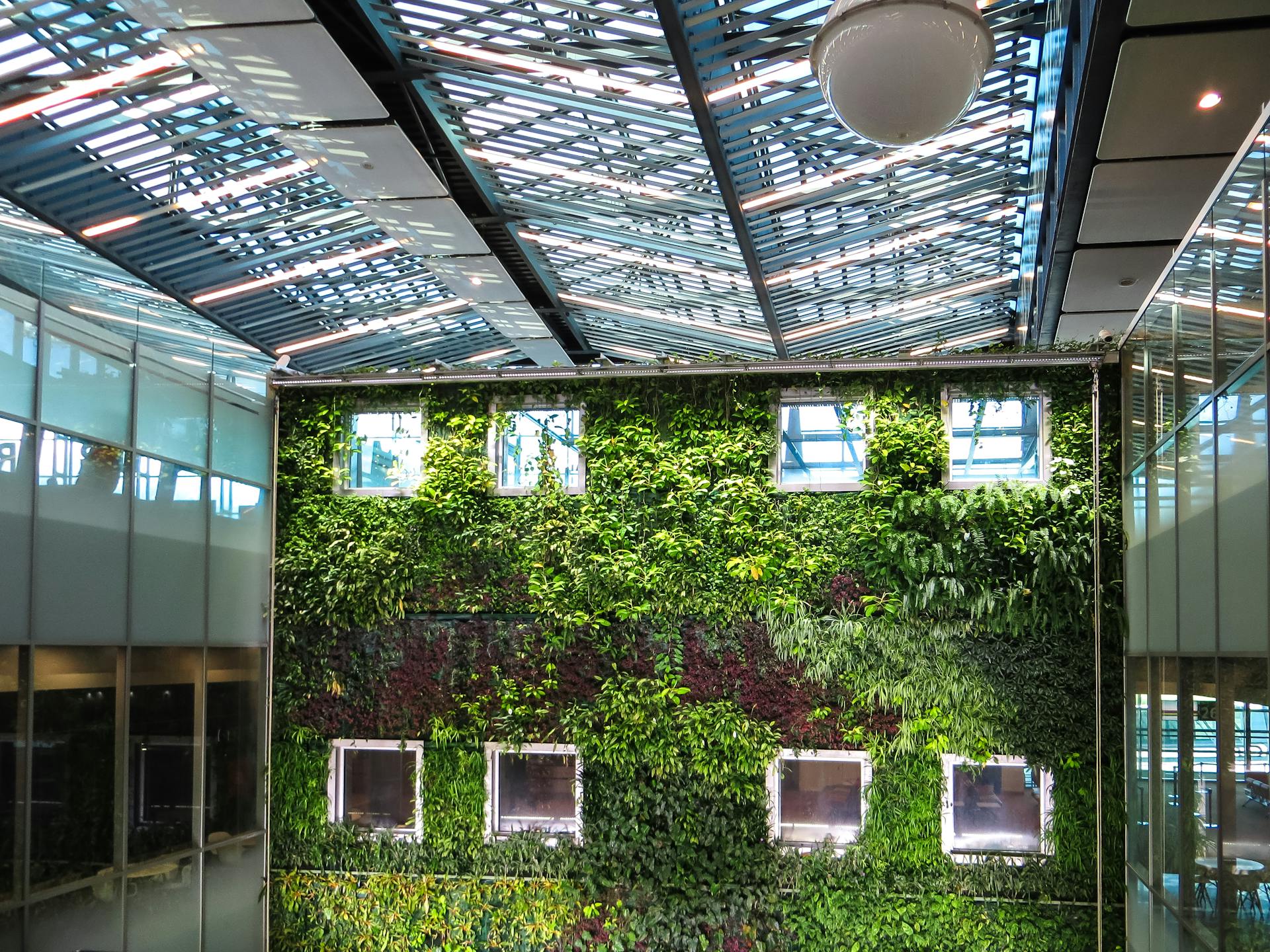

Question: Are Green Buildings More Ecological and Cost Effective?
Answer: Yes, green buildings are more ecological because they utilize sustainable materials, reduce energy consumption, and minimize environmental impact. They are also cost-effective in the long run due to lower energy and water usage, reduced maintenance costs, increased property value, and potential tax incentives for sustainable design.
Are Green Buildings More Ecological and Cost Effective? The Economic and Ecological Benefits of Sustainable Homes
The concept of green building has gained significant momentum in recent years. More and more people are interested in homes that minimize their environmental impact while offering a comfortable and healthy living space. But is there truth to the claim that eco-friendly homes are both good for the planet and your wallet? Let’s delve deeper and explore the economic and ecological benefits of sustainable design. [ 1 ]
Eco-Friendly Features: A Boon for the Environment
Green homes prioritize a range of features that reduce their environmental footprint. Here’s how they benefit the environment:
-
Energy Efficiency:
Sustainable homes are designed to use less energy. High-performance insulation, energy-efficient appliances, and natural lighting strategies all contribute to a significant reduction in energy consumption. This translates to lower reliance on fossil fuels and a smaller carbon footprint. -
Water Conservation:
Water-saving fixtures, appliances, and rainwater harvesting systems minimize water usage. This reduces strain on valuable water resources and promotes responsible water management practices. -
Reduced Pollution:
Sustainable homes often utilize recycled and low-emission materials during construction. Additionally, features like proper ventilation systems improve indoor air quality, minimizing exposure to pollutants. -
Sustainable Landscaping:
Drought-resistant native plants and rainwater harvesting for irrigation promote a healthy ecosystem around the home. This reduces reliance on chemical fertilizers and encourages biodiversity.
By incorporating these features, eco-friendly homes create a positive impact on the environment, leading to a healthier planet for all.
Click here for more information on real estate companies in Shelburne
Related Article: How Can I Retrofit My Old House for Energy Efficiency?
Related Article: What are the Economic Benefits of Sustainable Design?
Economic Advantages: Green Features Save Green
While there might be a slightly higher upfront cost associated with sustainable features, the long-term economic benefits are undeniable. Here’s how going green can save you money:
-
Lower Utility Bills:
Reduced energy and water consumption translate to significant savings on utility bills. Over time, the energy saved can outweigh the initial investment in energy-efficient systems. -
Reduced Maintenance Costs:
Durable and low-maintenance sustainable materials require less frequent repairs and replacements, saving money in the long run. -
Increased Property Value:
The growing demand for eco-friendly homes can lead to higher property values. Sustainable features become a selling point, potentially fetching a higher price when selling your home. -
Government Incentives:
Many governments offer tax breaks and financial incentives for incorporating sustainable features during construction. These incentives can significantly reduce the initial investment.
The economic benefits of sustainable design are clear. Green homes offer long-term cost savings for homeowners and contribute to a more sustainable future.
Finding the Balance: Weighing Costs and Benefits
While the ecological and economic benefits of green homes are significant, it’s important to consider all aspects before making a decision. Here are some additional factors to weigh:
-
Initial Investment:
Sustainable features might have a higher upfront cost compared to traditional construction methods. However, long-term savings and potential property value increase should be factored in. -
Lifestyle Considerations:
Some sustainable features, like solar panels, might require lifestyle adjustments. Evaluate your needs and preferences to ensure a good fit. -
Location and Climate:
The effectiveness of certain sustainable features can vary depending on your location and climate. Consult with professionals to determine the most suitable options for your specific situation.
A careful analysis of your budget, lifestyle, and location will help you determine the optimal balance between upfront costs and long-term benefits when building or renovating a home.
Beyond Savings: The Intrinsic Value of Green Living
There are additional benefits to consider beyond just cost savings. Living in an eco-friendly home can enhance your overall well-being:
-
Improved Health:
Sustainable features like proper ventilation and low-emission materials contribute to a healthier indoor environment, potentially reducing respiratory problems and allergies. -
Comfort and Convenience:
Energy-efficient features can create a more comfortable living space with consistent temperature control. Smart home technologies can further enhance convenience and energy efficiency. -
A Sense of Responsibility:
Living in a sustainable home allows you to contribute to a greener future. This can be a source of pride and satisfaction for environmentally conscious homeowners.
The intrinsic value of living in a healthy and sustainable environment goes beyond simply saving money. It’s about creating a home that promotes well-being for you and the planet.
Investing in the Future: Building a Sustainable Legacy
Choosing a green home is an investment in your future and the future of the planet. Here’s why it matters:
-
Resource Conservation:
Sustainable homes promote responsible resource use, helping to conserve valuable resources like water and energy for future generations. -
Combating Climate Change:
By reducing energy consumption and reliance on fossil fuels, eco-friendly homes contribute to the fight against climate change. -
Promoting Sustainability:
The growing popularity of green building practices paves the way for a more sustainable future for the construction industry. This encourages innovation in eco-friendly materials and technologies, leading to even more efficient and affordable options in the years to come.
The Road to Greener Homes: Making Informed Choices
Whether you’re building a new home or renovating your existing one, there are steps you can take to incorporate sustainable features. Here are some tips to get you started:
-
Conduct Research:
Educate yourself on various sustainable building practices and technologies. Numerous resources are available online and from government agencies. -
Consult with Professionals:
Work with architects, builders, and other professionals experienced in sustainable design. They can help you develop a plan that fits your budget and needs. -
Start Small:
You don’t have to overhaul your entire home at once. Begin by incorporating a few eco-friendly features, like energy-efficient appliances or water-saving fixtures. -
Consider Long-Term Benefits:
While the initial cost of some sustainable features might be higher, factor in the long-term savings on utility bills and potential property value increase.
By making informed choices and taking advantage of available resources, you can create a green home that benefits your wallet and the environment.
Click here to visit the home page for more information about Jennifer Jewell
Conclusion: A Sustainable Future Starts at Home
Green homes are no longer a niche concept; they are the future of responsible living. From environmental benefits like reduced pollution and resource conservation to economic advantages like lower utility bills and increased property value, the reasons to choose a sustainable home are compelling. By embracing eco-friendly features, you can create a comfortable, healthy, and cost-effective living space while leaving a positive impact on the planet. So, are you ready to join the green building movement? Start exploring your options today and build a sustainable future for yourself and generations to come.
References
1. https://wint.ai/blog/green-buildings-cost-less/


